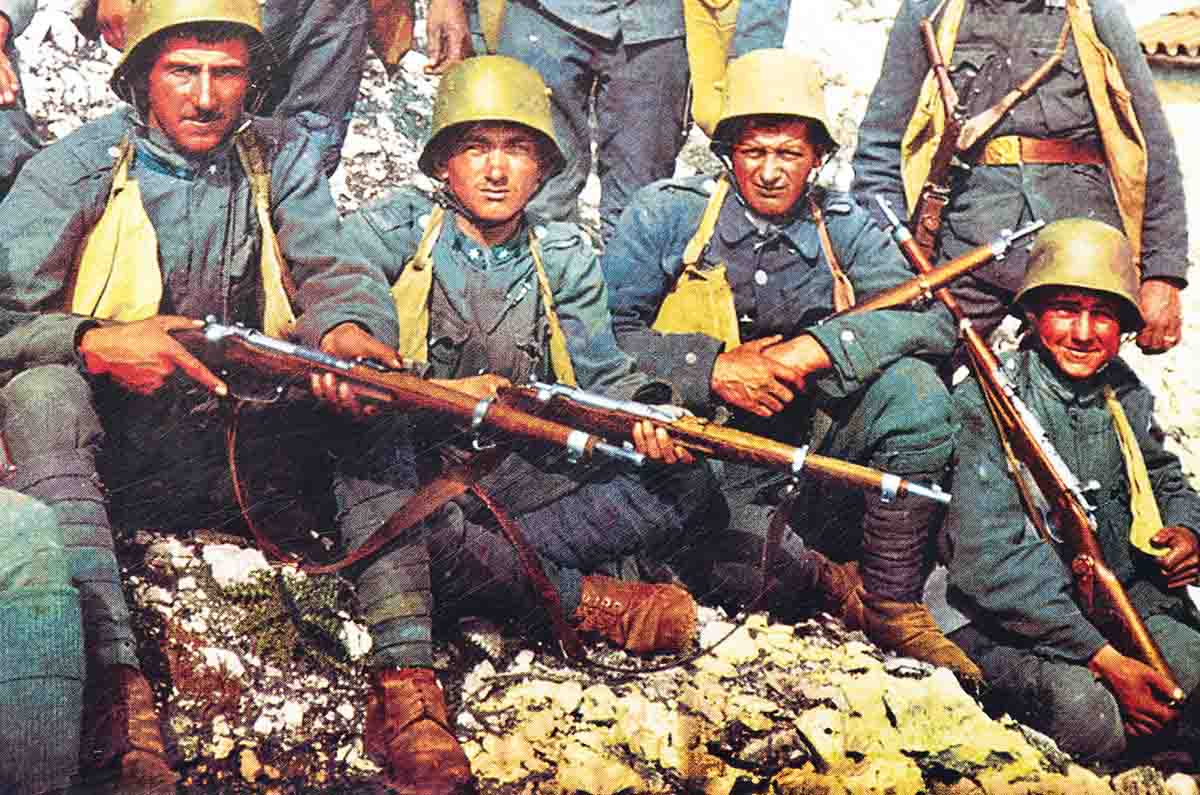Walnut Hill
Boots on the Ground
column By: Terry Wieland | March, 22

The first infantryman was a man with a club, then a spear, then a sword and shield; this progressed to bows, crossbows and finally muskets and rifles. Initially deployed in small bands, later formed into cohorts and legions, eventually infantry was organized in sections, platoons and battalions. Always, though, the essential element was the individual and his personal weapon.
In September, the Economist published an article about the future of warfare, focusing particularly on technological developments to make infantry more effective. The U.S. is spending big to develop tools of “enhanced reality.”
The immediate objective is an infantryman’s helmet with a clear visor and headphones. The visor will serve as a screen, with digital information constantly displayed in the man’s line of vision, relayed by a computer attached to the chest. This would include the distance to whatever the soldier is looking at, following his eye movement and projecting the information immediately. There would also be warnings of enemy activity spotted by drones or satellites, flashed onto the visor in real time.
One outfit is even working on contact lenses to provide the same information, able to track the slightest eye movements, with no helmet required.
All of this sounds very much like Star Wars, and today’s infantryman already resembles some of those science fiction soldiers with body armor, protective clothing, helmets, visors, headphones and equipment hanging off like a Christmas tree.
This is all very interesting, if not fanciful, but I wonder. Not to come across as a Luddite – I’ve been accused of that, and worse – but throughout history, victory has always come down to the most basic of infantry, and they have even won in the face of overwhelming technological disadvantage.
The most obvious recent example is the Taliban, and before that, the Viet Cong. American generals have not been oblivious to this fact, and for decades we heard the phrase “boots on the ground,” signifying the absolute requirement for infantrymen who can not only take a position, but hold onto it.
As far back as the Assyrians, infantry has been referred to as “the queen of battle.” It’s a curious term when you think about it. Why not the king? Apparently, it relates to chess, where the queen is the most powerful piece, and the sentiment has been repeated by such experts as Frederick the Great and the Duke of Wellington.
Napoleon, an artillery officer, favored cannons – he referred to his guns as his “daughters” – but at Waterloo, while they did great damage, in the end he was defeated by British infantry.

To get back to the Taliban – in fact, long before the Taliban – betting against the Afghans was a mistake. In 1842, the Afghans defeated the British; later, they defeated the Soviet Union (and precipitated the end of that “Evil Empire” as Ronald Reagan quite accurately referred to it) and of course, most recently, triumphed in a war against America and its allies that lasted 20 years.
The main weapon in all of this? The rifle. One man, one rifle, a bandolier of ammunition, combined with knowledge of the country, determination and a flat refusal ever to quit.
Any government with any knowledge of history lives in fear of a populace that can pull rifles out of closets and take to the streets. This is the most obvious purpose of gun control wherever it’s found. Pistols won’t do it, nor will machine guns, but enough rifles, in enough hands, and you’re going to win. It may take a while, but you will.
One can find any number of examples where a new technology has given a temporary advantage over infantry, but it never lasts. In 1914, the Germans, French and British all learned very quickly that the machine gun trumped infantry in massed attacks, but the machine gun was essentially a defensive weapon. After three years, the tank was developed to the point where it could overcome the machine gun but, as the British found out at Cambrai, while tanks could create a breakthrough, they could not win battles without infantry support to hold on to the ground that was gained.
Whenever this subject comes up, someone is sure to point out the role of the intrepid frontiersman with his squirrel rifle, winning the American Revolution by potting redcoats from behind trees. Every country needs a myth or two to hang onto, and that is ours. Of course, it’s not true and has been debunked by one historian after another.
But, as recently as a few months ago, a writer in National Review, the conscience of American conservatism, referred to farmers with “homemade muskets” defeating the British Army, which is absurd. Homemade? Please. At other times, I’ve seen references to the redcoats as “the most powerful army in the world.” It was far from that. In 1764, at the end of the Seven Years’ War, army strength was set at a maximum of 45,000 men, of whom only 10,000 were assigned to colonial duties around the world. In America, there were about 15 battalions – little more than a garrison force, and those with seriously divided loyalties.
The American colonists did not prevail until George Washington had fashioned a conventional army out of his rustic recruits. Washington himself, having trained as an infantry officer in the Seven Years’ War of the 1750s, knew what he needed to win, and it was a lot more than a frontiersman behind a tree with a squirrel rifle.
Many factors went into the eventual American victory, including significant sympathy from opposition parties in London that sapped British determination to win – they were always of two minds about it – and support from the French, who gleefully seized an opportunity to twist the lion’s tail.
In the end, though, the winningest factor was the infantry that Washington formed into an army, combined with the fact that they were fighting on their home ground, and determined to win no matter how long it took.
Another historical example, which might appear to prove the opposite, is the performance of the Boers in South Africa in 1899. The Dutch farmers were essentially mounted infantry, but for a time they fought the British Army to a standstill, and much of the credit – too much, to be brutally honest – was given to their marksmanship with their Mauser rifles. The British eventually prevailed, but very soon after granted self-government to the Union of South Africa, so in the end, you could argue the Boers won.
One lasting effect of the Boer War was a surge in interest in rifle shooting in England, with rifle clubs springing up all over, and the British Army placing great emphasis on rifle handling and marksmanship. Since the standing army was never large, it made up in quality what it lacked in numbers, and proved the point in the early months of 1914. So effective was British rifle fire in the early going, the Germans believed they were facing massed machine guns.
In the Economist article on the future of warfare, while it concentrated on enhanced capability of the infantry, I did not see a single reference to what the infantryman would be carrying to fight with. Instant intelligence is all very well, but you need to be able to send bullets effectively downrange to take advantage of it.
Presumably, he will be carrying a rifle, and except in rate of fire and accuracy, it will not be vastly different than the Garand of 1941, which General George Patton called, “the greatest battle implement ever devised.”
In the end, as it has been for centuries, it’s the man with a rifle that wins wars – and keeps them won.


